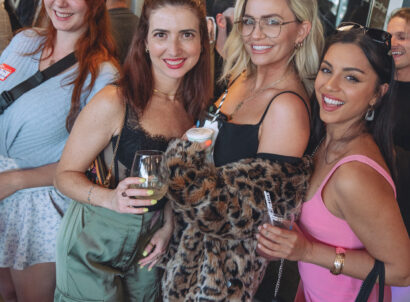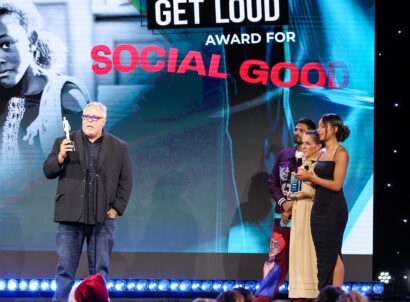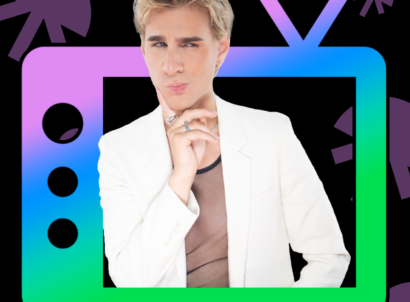As audience attention shifts mediums and the creator economy goes mainstream, digital creators have become the next generation of media stars and celebrities. What they’ve accomplished in building their audiences and becoming self-made celebrities is no easy feat, and they deserve credit where credit is due. In many ways, social media platforms have democratized media and eliminated blockers that once parsed out who would hit the limelight and for how long.
Social media platforms have leveled the playing field for creators with talent, personality, or perspective that audiences deem worthy of their time and attention. Creators are pioneers in a new era in which anyone with a camera, a stable internet connection, and a lot of willpower can potentially become celebrities and one-person shows, businesses, and media outlets. Our own Hugo Amsellem spoke about this topic at length at Nas Summit earlier this year.
Though social media’s net impact on society is a labyrinthian topic pontificated by academics, philosophers, historians, and just about everyone, creating an avenue for self-made celebrity is one aspect of the conversation that should be celebrated.
The world of media and entertainment has long been restrictive to outsiders, closely managed by strict gatekeepers like movie studios and record labels. With rare exception, musicians, newscasters, models, and other forms of media-centric professions have been, for the most part, only accessible to a limited, exclusive cohort in society.
Celebrities who rose to prominence via more conventional avenues are often the sons and daughters of socialites, the wealthy, and the well connected. In other words, one of the biggest variables in whether or not someone would “make it” was the family and economic standing they were born into.
Of course, it’s perfectly possible to be born into the right circumstances and be talented –– these things are not mutually exclusive. But by and large, the difference between who gets their shot at fame is often governed by factors other than raw talent or even star power.
At least that’s how things were prior to the rise of social media platforms, particularly video-centric ones. Now, almost everyone has a stage. The barrier of entry has been lowered. From arts and crafts, cooking, and music, to comedy skits, and obscure interests, the barriers of connecting to large-scale audiences have never been as easily accessible as they are now.
While the barrier of entry may have been lowered, competition for audience attention grows. Successful creators are grassroots celebrities, and deserve the recognition as such in popular culture. Their fame is earned, not granted. Success for creators is a direct function of whether people like what they are creating and their dedication to their craft.
Prior to the rise of social media and the creator economy, accumulating fame required capital investment and connections. After all, media coverage can be bought, and socializing with the rich and famous does have its perks. Even having the ability to attend numerous auditions at all hours of the day shuts the door to fame for many, regardless of their creative talent.
Every creator starts at the same place: Zero followers and their first upload. The 1,000 subscriber milestone, the first viral video, the first sponsor. These are rites of passage that every creator must achieve on their own merit. The path to success includes equalized stepping stones. The heights they reach are purely up to the audience of the internet.
Audience Attention Is Shifting
The rise of creators is already having a huge impact on dynamics within media and advertising industries.
Over the last decade, data shows that attention is increasingly shifting away from TV, print publications, and other forms of legacy media formats and shifting toward digital-first creators and online streaming.
Over the last decade, the audience sizes of cable networks have been in freefall. According to Pew Research Center, the number of Americans with cable has declined by a whopping 26% since 2015.
The audience sizes for streamers and digital-first creators have been absorbing the shift. Over the same period of cable’s shrinking share of audience attention, YouTube’s number of active users increased by more than 90%.
The numbers also show this trend is poised to continue in the coming years.
Only 34% of viewers aged 18–29 reported having cable in 2021, whereas more than 80% of viewers aged 65 and up did.
Pew Research Center
That means the overall average of 56% is asymmetrically buoyed by audiences aged 65 and up, and trends downwards with age brackets.
These changing paradigms of primary media vehicles reflect a technological shift in where audience attention lies and how content is consumed.
It’s a trend that’s been unfolding for decades. The rise of reality TV in the 2000s reflected a cultural call for less polished and scripted content, opting for more personal, real stories that blurred the line between reality and entertainment.
Creators and the digital content they produce are a continuation of this trend, turbocharged by the powerful inclusiveness of the internet. Accordingly, there’s reason to believe self-made creators will continue to carve out larger and larger portions of fame and celebrity as larger proportions of the population adopt internet streaming as their primary mode of content consumption.
Legacy Meets the Next Generation of Media Stars
Perhaps it’s no surprise then, that there has been significant cross pollination between legacy media outlets, streaming services, and social media content creators in recent years.
To illustrate: Netflix’s Hype House is a reality TV show in which a group of creators live together in a Los Angeles home; Jellysmack creator partner Lauren Riihimaki secured a position as host on HBO’s Craftopia based on the incredible and longstanding popularity of her YouTube channel; Justin Bieber and Shawn Mendes first found audiences on social media and they have both reached the kind of global superstar status that even money can’t buy.
In addition to creators growing centrality in the media industry at large, audiences also benefit from the rise of the creator economy. Every day, millions of hours’ worth of new content is uploaded online. That gives audiences more variety than ever before, enabling them to indulge in even their most obscure interests on a whim. In order to navigate this endless and ever-growing content library, audiences will organically take a more proactive role in the content they consume by finding creators and channels they like. Streaming services like Hulu and Netflix have accustomed audiences to watching what they want when they want in lieu of waiting for a specific time or release.
What’s more, digital creators often have more personal and direct relationships with their viewers as compared to traditional celebrities. Creators post regularly, gaining credibility with their viewers through repeat exposure. They dutifully build meaningful relationships, rapport, and trust with their viewers over time in much the same way high-exposure media personalities like Oprah, Larry King, or Alex Trebek did. Moreover, many creators have engaged with their audiences in comments and via other social media channels of communication, notably so during their initial growth phase. This direct engagement nurtures a more loyal following between celebrities and their fans.
That’s an attractive prospect for brands who want to place their products in front of the right audiences. Creators can leverage this established relationship and the attention they’ve accumulated. After all, ad spend’s main objective is to buy attention, and creators have audience attention.
Creators Are Entrepreneurs
Not only do creators build their platforms based on audience appeal and perseverance, they organically grow into an entrepreneurial mindset. It often starts with learning to understand the analytics surrounding their uploads and content performance, progresses into developing various revenue and monetization opportunities, while simultaneously always looking to optimize their content production.
At Jellysmack, we applaud creators who have put in the time, work, and talent that it takes to build an audience. We know it’s not easy––being a creator is a competitive and demanding career. After all, less than one percent hit the point in which they are able to financially sustain themselves as creators full time.
Creators are self-made entrepreneurs who generated their own fame based on what they had to offer the world. In doing so, they were able to find a platform. They had to find ways to stand out in a competitive environment. Many of them did so entirely on their own through trial and error, failures and successes, and without the help of an agent, manager, or producer, at least in the beginning.
And that’s why we’ll be the first to clear up any misconceptions about what it takes to become a successful creator. They are truly self-made, merit-based celebrities who got where they are by offering the world a little something different––and leaving their audiences eager for more.





